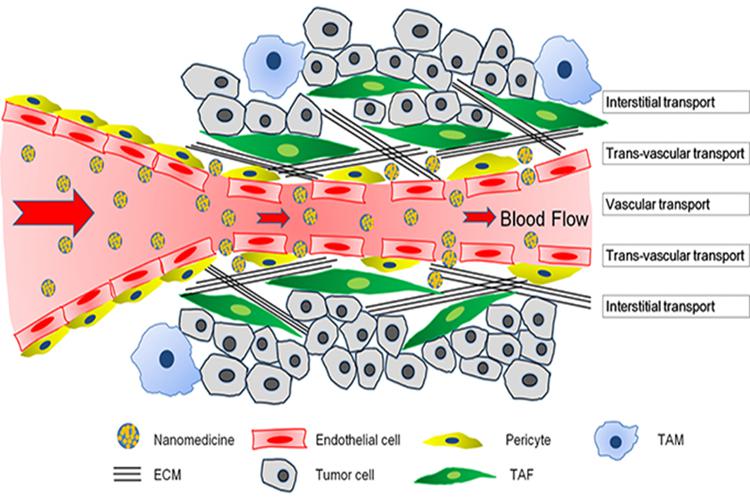- Share
- Share on Facebook
- Share on X
- Share on LinkedIn
Seminar
On May 19, 2025

Suman Chakraborty (IIT Kharagpur)
Human body is undoubtedly an amazingly unique machinery, threaded by a complex network of tiny blood vessels. The resulting orchestrated circulation, however, may be severely disrupted under different diseased conditions such as cardiovascular ailments and cancer. Progressing cancer by itself creates very complicated dynamic surrounding around a tumour by engaging the nearby blood vessels, affecting the regions in the immediate vicinity of the diseased cells as well as the molecules that may potentially exchange information with them. While modern technology permits drugs to be directed to the specific diseased sites, the therapy may not effectively work in practice as per intention due to physiological complexities. Testing of the efficacy of such targeted drug delivery, prior to administering to human patients, therefore, is extremely critical in pre-clinical trials. Prior to human trials, the testing needs to be conducted on animals, but the resulting findings are often not the same as in the case of humans because of contrasting physiological features. A disruptive alternative approach may be to have a controlled study on the drug efficacy in a test platform that is completely bioengineered but replicates the microvascular environment in the human body to a large extent – something that seems more like a fiction rather than a fact. The speaker throws light on their research findings leading to a solution of overcoming this apparent impossibility, by introducing a new technology to engineer microvascular network on a chip having physiologically mimicking features, using a frugal approach that does not demand any sophisticated fabrication facility. Advancing the same forward, he demonstrates how this development helps in understanding how the deformation of these tiny capillaries may influence the magnetic-targeting of drug-loaded nanoparticles towards specific diseased sites.
Having realized the above, the dream still appears to be much far away from the reality. The tiny blood capillaries are not just structurally and functionally complex, these may tend to evolve dynamically as well – for example, during the emergence of new blood vessels (angiogenesis) as the cancer spreads around the human body. To that end, the speaker brings out some insights the mechanism of interaction between a tumour and its immediate surroundings, by considering the triggering of the vascular growth factors, movement of the wall-adhering cells and their dynamic engagement with the newly formed blood vessels as well as the extracellular matrix. These findings appear to be critical in converging the successes of drug trials towards patient-specific targeted therapies depending on personalized vascular properties obtained from medical imaging data, predicting the targeted therapeutic outcome in sufficient advance, and shortening lengthy animal trials that otherwise has very low rate of successful translation to human therapies. Beyond these specific implications, the vision may open up new possibilities of developing new generation biomimetic devices that may be used as synthetic simulators of the human body to unravel the mysteries of varies life-threatening diseases that could not be deciphered thus far.
Contact: Chaouqi Misbah
Date
11:00
Localisation
LIPhy, salle de conférence
- Share
- Share on Facebook
- Share on X
- Share on LinkedIn